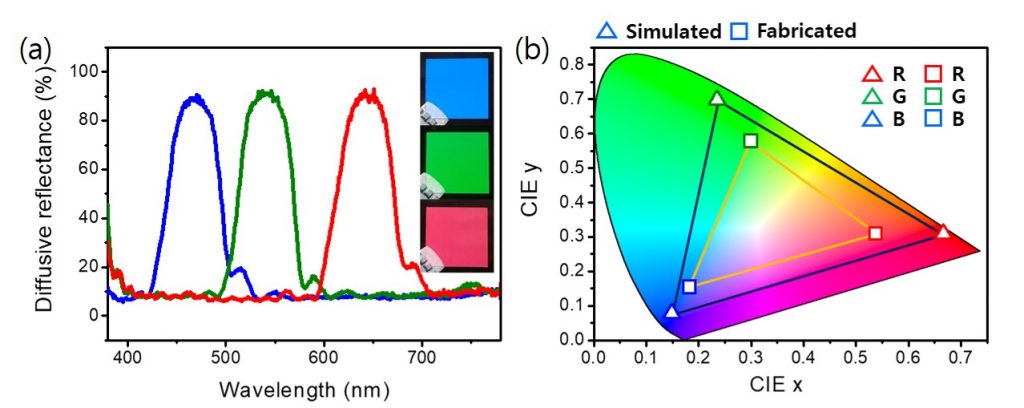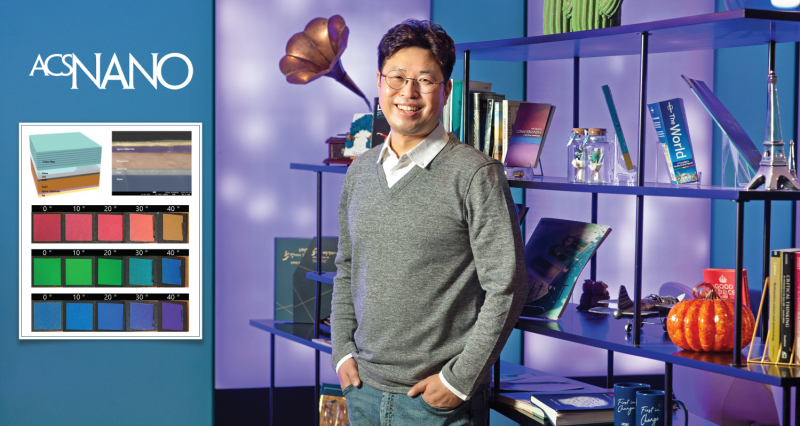It will not be long before seeing commercial buildings decorated with colorful perovskite solar cells (PSCs), like beautiful mosaic decoration at the ancient cathedral. With the advent of photovoltaic power system, one can take advantage of newer, more effective photovoltaic installation technologies in buildings, including exteriors, façades, and rooftops are emerging. Such technologies offer enormous potential for many applications without compromising the building’s aesthetic, thus are expected to increase the demand for solar cells.
A research team, jointly led by Professor Sung-Yeon Jang in the School of Energy and Chemical Engineering at UNIST and Professor Young Rag Do in the Department of Chemistry at Kookmin University, has succeeded in developing high-efficiency colorful perovskite solar cells (PSCs) that can be applied to building exteriors. With minimized power conversion efficiency (PCE) loss and enhanced photostability, this has attracted considerable attention for use in building-integrated photovoltaics (BIPVs).
Solar cells absorb visible light energy in specific wavelengths from the sun, converting it into electrical energy. Yet, the color of an object that we see is determined by the wavelengths of light that it reflects. Because the color of the solar cells is produced by reflection of visible light from its surface, the wavelength bands that the photovoltaic cells can absorb decreases. As a result, implementing colors in existing solar cells willsignificantly lower PCEs.
Commercially available silicon solar cells are highly efficient, yet are influenced by the angle (incident angles) at which sunlight enters the cell. For this reason, some portion of the direct sunlight is lost because of oblique sun-angles in relation to the array. This hinders the applications of silicon solar cells for the exterior walls of buildings.

Figure 1. Schematic diagram of the structure of NBRF formed by (a) periodic and (b) nonperiodic stacking of alternatively high-refractive-index (TiO2) and low-refractive-index (SiO2) layers.
In this work, the joint research team achieved colorful PSCs with minimized PCE loss and enhanced photostability by exploiting the optical properties of nonperiodic multi-nanolayer, narrow-bandwidth reflective filters (NBRFs). The NBRFs were fabricated by multilayering high-index TiO2/low-index SiO2 in a nonperiodic manner, which allowed devices to demonstrate various colors with effectively suppressed unwanted baseline ripple-shape reflectance. Besides, the team observed that the photostability of the PSCs was substantially improved by using the NBRFs because of ultraviolet blocking in the TiO2 layers.

Figure 2. (a) Diffusive reflectance of RGB-NBRF-based PSCs. Schematic diagram of the structure of NBRF formed by (b) Color coordinates of RGB-colored PSCs, simulated RGB-NBRFs, and fabricated RGB-NBRFs. The fwhm of RGB-NBRFs used in PSCs was 50 nm.
“Aesthetic color value, low PCE loss, and enhanced photostability of PSCs were simultaneously achieved by employing our NBRFs, making this a promising strategy with potential applicability in power-generating building exteriors,” says the research team. “This result can lead to potential applicability of thin-film solar cells as power-generating building exteriors.”
The findings of this research have been published in the October 2019 issue of ACS Nano. This work as been supported by the National Research Foundation of Korea (NRF) and KETEP.
Journal Reference
Gang Yeol Yoo et al., “Stable and Colorful Perovskite Solar Cells Using a Nonperiodic SiO2/TiO2 Multi-Nanolayer Filter,” ACS Nano, (2019).












